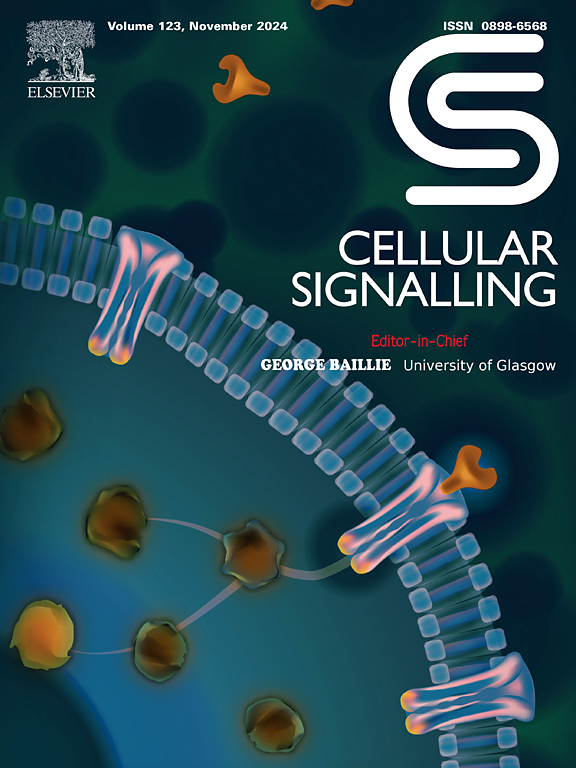KIF18B drives the malignant progression of gliomas by activating the Notch pathway
IF 4.4
2区 生物学
Q2 CELL BIOLOGY
引用次数: 0
Abstract
Kinesin family member 18B (KIF18B) is expressed differently in multiple malignancies and contributes to tumorigenesis. However, the relevance of KIF18B in glioma remains undetermined. This work evaluated the level and clinical significance of KIF18B in glioma. The upregulation of KIF18B was frequently detected in glioma specimens, which was related to clinicopathological features and therapeutic outcomes. A decrease in KIF18B expression in glioma cells was found to suppress malignant proliferation and metastasis, while simultaneously enhancing the cells' sensitivity to chemotherapeutic agents. Bioinformatics analysis demonstrated a significant correlation between KIF18B and the Notch signaling pathway in glioma cells. Further experimental validation confirmed that silencing KIF18B effectively inhibited the activation of the Notch signaling pathway. Reactivation of the Notch signaling pathway remarkably reversed the cancer-suppressing effects of KIF18B knockdown. Moreover, the ability of KIF18B-silenced glioma cells to form xenografts in nude mice was markedly impaired, accompanied by the downregulation of the Notch signaling pathway. This work indicates that KIF18 is crucial for maintaining glioma progression and proposes its potential as a promising therapeutic target for glioma treatment.
KIF18B通过激活Notch通路驱动胶质瘤的恶性进展
激酶家族成员18B (KIF18B)在多种恶性肿瘤中表达不同,并参与肿瘤发生。然而,KIF18B在胶质瘤中的相关性仍未确定。本研究评估了KIF18B在胶质瘤中的表达水平及其临床意义。在胶质瘤标本中经常检测到KIF18B的上调,这与临床病理特征和治疗结果有关。研究发现,KIF18B在胶质瘤细胞中的表达降低可抑制恶性肿瘤的增殖和转移,同时增强细胞对化疗药物的敏感性。生物信息学分析表明,KIF18B与胶质瘤细胞中的Notch信号通路存在显著相关性。进一步的实验验证证实,沉默KIF18B可有效抑制Notch信号通路的激活。Notch信号通路的重新激活显著逆转了KIF18B敲低的抑癌作用。此外,kif18b沉默胶质瘤细胞在裸鼠体内形成异种移植物的能力明显受损,并伴有Notch信号通路的下调。这项工作表明KIF18对于维持胶质瘤的进展至关重要,并提出其作为胶质瘤治疗的有希望的治疗靶点的潜力。
本文章由计算机程序翻译,如有差异,请以英文原文为准。
求助全文
约1分钟内获得全文
求助全文
来源期刊

Cellular signalling
生物-细胞生物学
CiteScore
8.40
自引率
0.00%
发文量
250
审稿时长
27 days
期刊介绍:
Cellular Signalling publishes original research describing fundamental and clinical findings on the mechanisms, actions and structural components of cellular signalling systems in vitro and in vivo.
Cellular Signalling aims at full length research papers defining signalling systems ranging from microorganisms to cells, tissues and higher organisms.
 求助内容:
求助内容: 应助结果提醒方式:
应助结果提醒方式:


